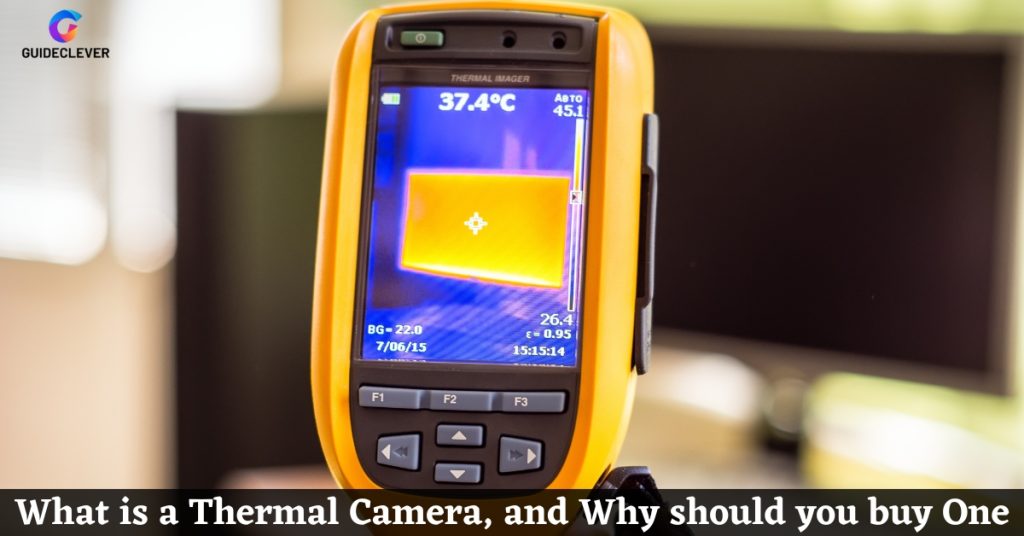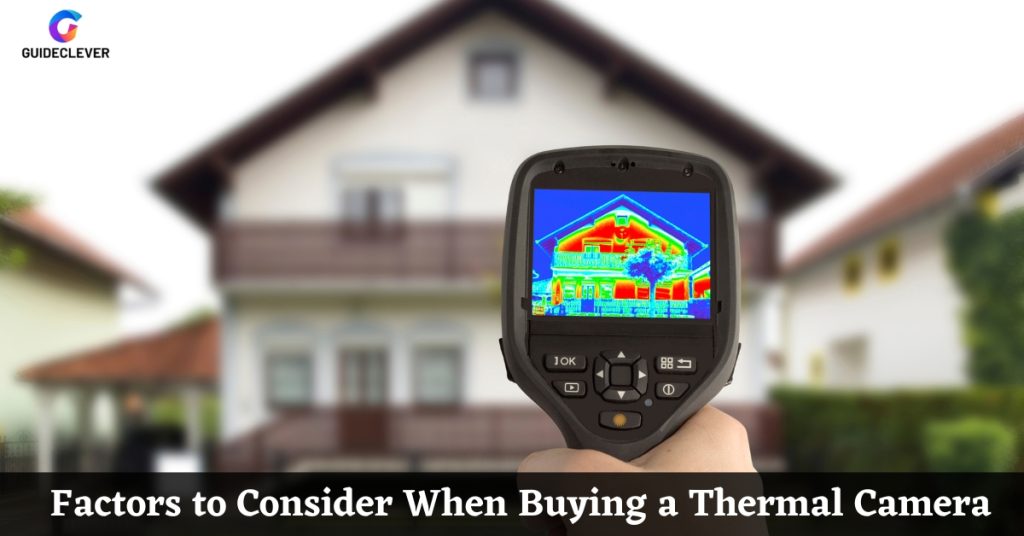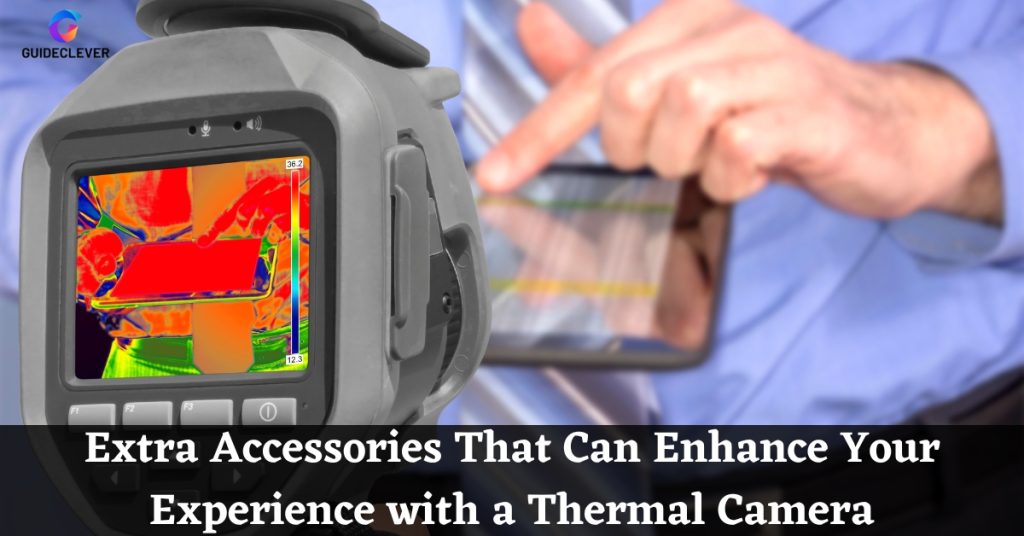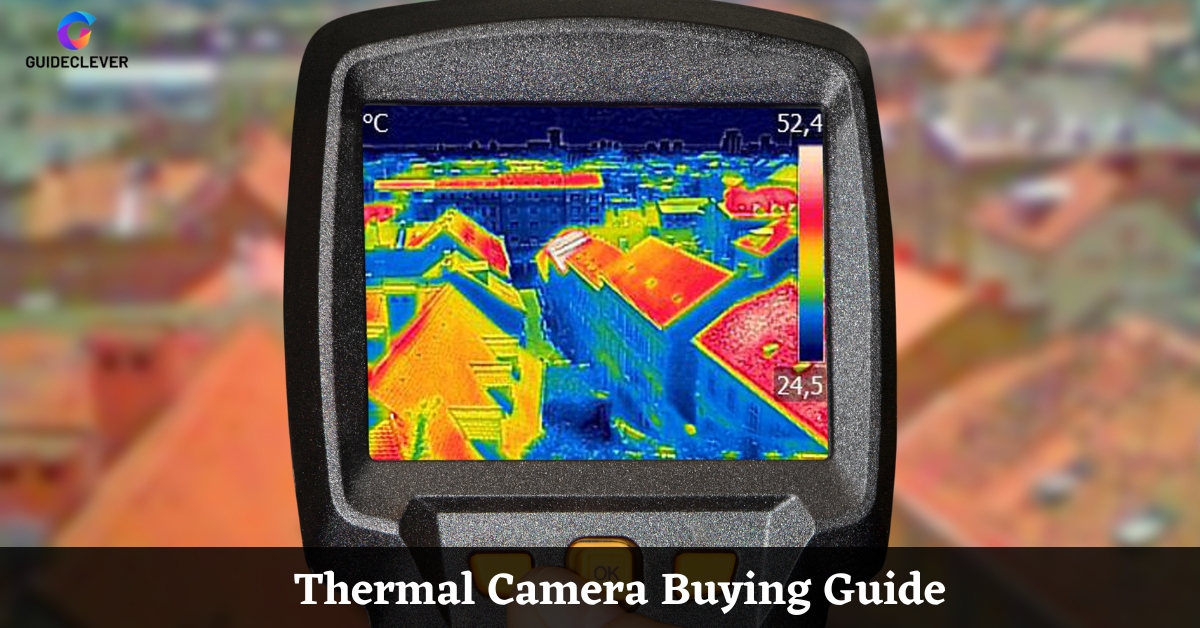Welcome to our Thermal Camera Buying Guide! Don’t worry if you need help with what to look for in a thermal camera or help to understand the technical terms, don’t worry. We’re here to help you learn about thermal imaging and choose the right camera. Thermal cameras can see heat, which means they can show you things that you can’t see with your eyes. It makes them useful for a variety of purposes, such as safety and security, animal protection, and energy auditing.
In this guide, we will discuss and learn about thermal cameras. We will start with the basics of thermal imaging and then move on to the different types of cameras available. We’ll also discuss how to choose the right camera for your needs and budget. So whether you’re a professional or just someone who wants to learn more about thermal imaging, this guide is for you. We’ll give you the knowledge you need to make an informed decision and choose the best thermal camera for your needs.
Contents
- 1 What is a Thermal Camera, and Why should you buy One
- 2 Different Types of Thermal Cameras Available
- 3 Factors to Consider When Buying a Thermal Camera
- 4 How to Choose the Right Resolution for Your Needs
- 5 Understanding Heat Sensitivity and Emissivity Ratings
- 6 Maintenance Requirements for a Thermal Camera
- 7 Extra Accessories That Can Enhance Your Experience with a Thermal Camera
- 8 FAQs
- 9 Conclusion
What is a Thermal Camera, and Why should you buy One

A thermal camera, also called an infrared camera, can see heat. It uses infrared light to make pictures of things that people can’t see. This technology can be used in many ways, like:
- Security and surveillance: Thermal cameras can spot people who are not supposed to be there or strange things happening. They can do this even when it is dark or there is bad weather.
- Search and rescue: Thermal cameras can help find people who are lost. They can do this by finding the heat that people give off.
- Firefighting: Thermal cameras can help firefighters find hot spots and areas with a lot of heat. This helps them know where the fire is and how to put it out.
- Industrial inspection: Thermal cameras can help find parts that are too hot, problems with electricity, and problems with the way things are made. This can help keep people safe and make sure that machines work well.
- Energy efficiency: Thermal cameras can help find places where heat is lost or where air leaks into buildings. This information can be used to make buildings better at keeping heat in, which can save money on heating bills.
- Wildlife monitoring: Thermal cameras can help scientists and people who protect animals find and watch animals. They can do this even at night or in places with lots of trees. This helps scientists learn more about animals and how to protect them.
We have discussed Cameras Vs Security System in another post.
Different Types of Thermal Cameras Available
There are many types of thermal cameras. Each class has unique uses and purposes, so it’s essential to understand them before deciding. Here are the different types:
Handheld Thermal Cameras: These are portable and easy to carry around. Perfect for people who need quick thermal imaging. They work well with building inspections, electrical diagnostics, and HVAC care.
Fixed Thermal Cameras: They come in designs for permanent installation in one place. From a particular point, they can watch around the clock. So they’re ideal for perimeter security, industrial process control, and fire detection systems.
Thermal Pan-Tilt-Zoom (PTZ) Cameras: Offers both horizontal and vertical movement. These are great for large outdoor spaces like stadiums, industrial sites, and airports.
Smartphone thermal cameras– Use new technology to let you see the heat on your phone. They are great for DIY jobs and personal use. To use it, you need to attach the camera to your phone. Once it is connected, you can use the camera to see heat signatures. It can be helpful for various tasks, such as: finding leaks in your home, checking for electrical problems, and much more!
Mounted Thermal Cameras: These cameras can be mounted onto machines, drones, or vehicles. They are helpful for aerial inspections, transportation, and agriculture.
Now you know the different types of thermal cameras available. So, think about what you need and select the best fit for your needs. You can find choices suitable for professionals or beginner-friendly options too. Make sure to pick the right one for your needs!
Factors to Consider When Buying a Thermal Camera

The thermal camera uses infrared light to create images of things we can’t see. We can use them for various purposes, from home inspection to industrial maintenance. When choosing a thermal camera, a few essential factors must be considered.
- Temperature range: It is the range of temperature that a thermal camera can measure. Ensure to choose a camera with a temperature range that is wide enough to meet your needs.
- Resolution: The resolution of a thermal camera is the number of pixels it can capture. A higher resolution will provide more detail in the images that you capture.
- Sensitivity: Look for cameras with high sensitivity, it will allow you to detect slight temperature differences.
- Imaging modes and features. Look for the features. Some cameras offer color palettes or image fusion, which can enhance your analytical capabilities.
- Weight and size: Thermal cameras can vary in size and weight. If you plan on carrying your camera with you, choose a model that is lightweight and portable.
- Price: The price of thermal cameras can vary from a few hundred dollars to several thousand. Set a budget before you start shopping so that you spend your money wisely.
You can find a thermal camera that meets your needs and budget by checking these factors.
How to Choose the Right Resolution for Your Needs
Choosing the right resolution is vital for meeting your specific needs in a device. Consider the following factors to make an informed decision:
Purpose: Professional graphic design or photo editing requires sharp and detailed visuals. So, opt for higher resolutions like 4K or 8K.
Screen Size: Higher resolutions shine on larger screens. It prevents individual pixels from being visible. For laptops or mobile devices, resolutions like Full HD (1080p) or Quad HD (1440p) can provide pleasing visuals.
Budget and Hardware:
Higher resolutions often come at a higher cost and need more powerful hardware. If budget is a factor, balance affordability and visual quality with a lower resolution.
Consider the purpose, screen size, budget, and hardware capabilities. Choose the optimal resolution that delivers exceptional visual experiences tailored to your needs.
Understanding Heat Sensitivity and Emissivity Ratings
When choosing a thermal camera, it is vital to understand the two main factors. These are heat sensitivity and emissivity that affect its image accuracy:
Heat sensitivity is a measure of how well a camera can detect heat. A higher heat sensitivity rating allows the camera to see more minor temperature differences.
Emissivity relates to an object’s thermal radiation emission.
A higher emissivity rating means the camera will get a more accurate reading of the object’s temperature.
The ideal heat sensitivity rating for a thermal camera depends on the specific application. For most general-purpose applications, a heat sensitivity rating of 0.05°C is enough. But, for more demanding applications, such as industrial inspection or medical diagnostics, a higher heat sensitivity rating may be necessary.
The ideal emissivity rating for a thermal camera also depends on the specific application. But, in general, a high emissivity rating is preferred. This is because a high emissivity rating ensures that the camera will get an accurate reading of the object’s temperature.
When choosing a thermal camera, it is essential to consider the heat sensitivity and emissivity ratings of the camera. By doing so, you can ensure that the camera will be accurate enough for your specific needs.
Maintenance Requirements for a Thermal Camera
Proper maintenance can help your thermal camera last longer and perform better. Here are some easy steps you can follow:
- Keep the camera clean and dry. It will help protect it from dust, dirt, and moisture.
- Clean the lens with a soft, lint-free cloth. It will help ensure the best image quality.
- Charge the battery according to the manufacturer’s instructions. It will help extend the battery life.
- Install the latest hardware updates. It will help improve the camera’s performance.
- Consider having the camera calibrated regularly. It will help ensure accurate temperature measurements. You can have the camera calibrated by a professional or use specialized equipment.
Extra Accessories That Can Enhance Your Experience with a Thermal Camera

If you use a thermal camera, there are extra attachments that can improve your experience. These attachments can add new functions, make things easier, and expand what your thermal camera can do.
Here are some of the extra attachments for a thermal camera:
- Carrying case or bag: This will protect your camera from dust, scratches, and accidental damage.
- Tripod or mounting system: This will give you a stable platform to hold your camera so that you can take hands-free photos and videos.
- Spare batteries or external power source: This will extend your camera’s battery life so that you can use it for longer.
- Specialized lenses and filters will allow you to capture specific thermal data or enhance the image quality of your photos and videos.
- Thermal camera smartphone adapter: This will turn your smartphone into a thermal imaging tool to take thermal photos and videos on the go.
Using these extra attachments can make your thermal camera more versatile and powerful. They can also help you get more out of your thermal camera by allowing you to use it in different ways and for other purposes.
FAQs
What is the difference between infrared and thermal cameras?
Infrared cameras see heat. Thermal cameras are a type of infrared camera that can see the difference between hot and cold. They are used for building inspections and electrical diagnostics. All thermal cameras are infrared cameras, but not all infrared cameras are thermal cameras.
What is the best thermal camera to detect water leaks?
The best thermal camera for water leak detection depends on your budget, specific needs, and desired features. Some popular brands include FLIR E8, FLIR C3, and Seek Thermal Compact PRO. These cameras offer high-resolution thermal imaging, reliable leak detection, and easy-to-use interfaces.
- FLIR E8 is a high-end camera that offers excellent image quality and performance. It is a good choice for professionals who need a reliable tool for water leak detection.
- FLIR C3 is a mid-range camera that offers good image quality and performance. It is a good choice for homeowners and DIYers who need a reliable camera for water leak detection.
- Seek Thermal Compact PRO is an entry-level camera. It offers basic image quality and performance. It is a good choice for homeowners and DIYers who are looking for an affordable camera for water leak detection.
What is the disadvantage of the thermal camera?
Thermal cameras have some disadvantages. They can’t show detailed visual information like regular cameras. Instead, they show thermal images, which can make it hard to see specific objects or details, especially when you need good vision. Thermal cameras are also more costly than regular cameras, which can limit their use due to cost.
Conclusion
Choosing the right thermal camera can be daunting. But with the knowledge gained from this Thermal Camera Buying Guide, you have the power to make an informed decision. Consider heat sensitivity, emissivity ratings, and maintenance requirements of your device. Also, look for extra accessories that could upgrade your experience with it. With all this in mind, there’s no reason why you shouldn’t be sure while shopping for a thermal camera. With the right knowledge, you will get a more precise and vivid view of your unseen world.


